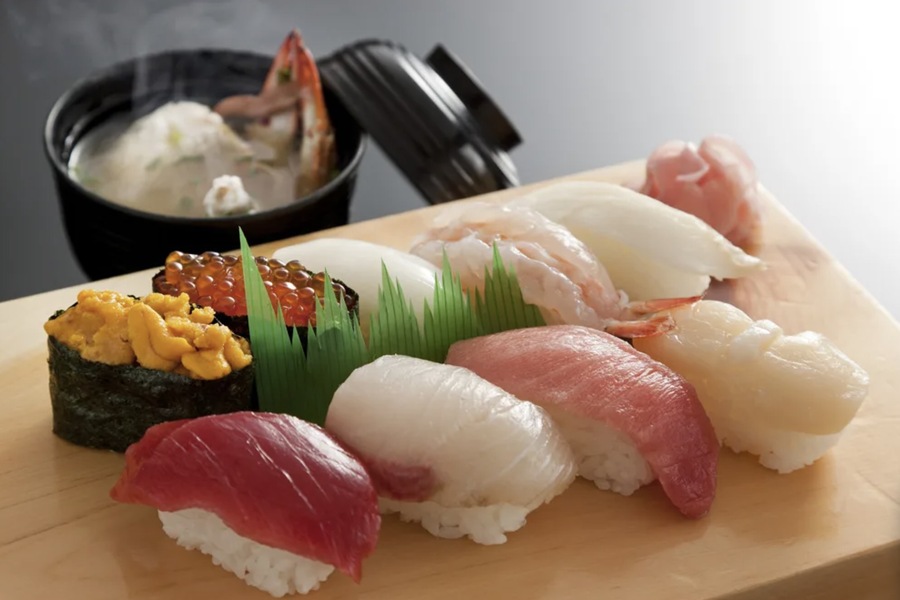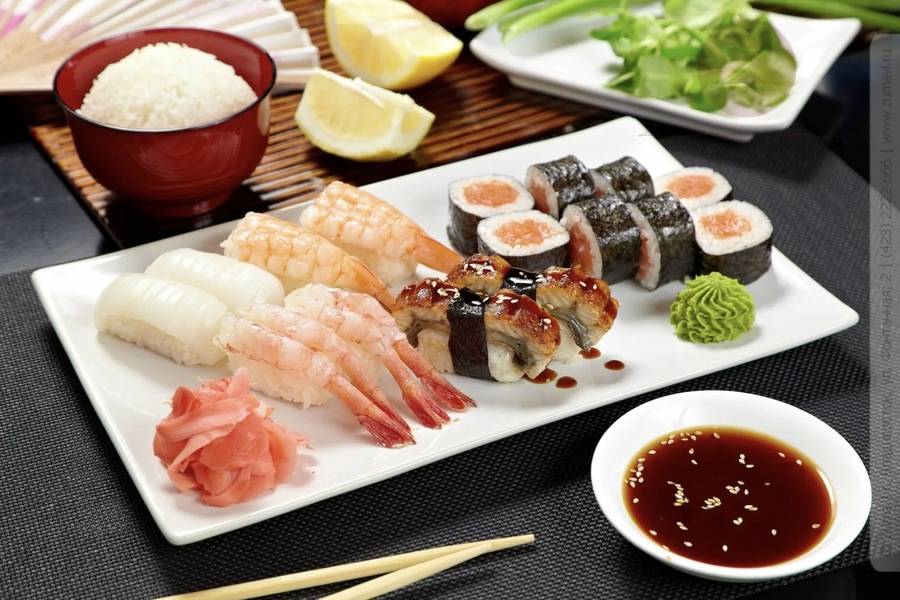One of the greatest benefits of living in Dubai is the rich variety of culinary experiences, and among the most popular cuisines is Japanese. Over the years, the demand for Japanese culture and cuisine, especially sushi, has increased dramatically in the UAE, and Dubai leads the way in offering some of the best Japanese culinary experiences. The appeal of Japanese cuisine lies in its simplicity, harmony of flavors, and use of high-quality, fresh ingredients. As a result, sushi has become one of the most beloved dishes in Dubai, with many restaurants specializing in traditional and fusion sushi dishes to satisfy a diverse audience, and GreatList helps you find only the best places to enjoy this dish.
The Origins of Sushi
Sushi, which now enjoys global popularity, originated in South Asia centuries ago. The concept of sushi was first introduced as a method of preserving fish. In ancient times, boiled rice was used to store and preserve fish by allowing it to ferment. The process began by cutting the fish into small pieces, sprinkling them with salt, and mixing them with boiled rice. This mixture was then placed under a heavy stone press. After several weeks, the stone was replaced with a lid, and the rice and fish were left to ferment for months. This fermentation process, known as lactic acid fermentation, helped preserve the fish for up to a year, making it fit for consumption long after it was caught.
In the 7th century, this preservation method spread to Japan through China and Thailand. Japan soon adopted this technique, and pickled or marinated fish became a common food item. However, it was not until the 17th century that sushi evolved into a dish with boiled rice, seafood, vegetables, and rice malt, signaling the introduction of modern sushi. A significant innovation came with the invention of rice vinegar, which eliminated the need for fermentation and drastically reduced the time required to prepare sushi.
In the 19th century, sushi saw a significant transformation when Yohei Hanai, a chef from Tokyo, revolutionized the dish by serving raw fish on top of vinegared rice, skipping the marinating process entirely. This simple yet bold move led to the creation of what is now known as “nigiri sushi,” and the process of making sushi was reduced to just a few minutes. Sushi quickly gained popularity, leading to the development of two distinct preparation styles: Kansai, named after Osaka, and Edo, named after Tokyo (formerly Edo).
In the late 20th century, technological advancements further streamlined the sushi-making process. With the introduction of sushi-making machines, commonly referred to as sushi robots, the production of sushi became more efficient, particularly in high-demand settings. These machines allowed sushi restaurants around the world to cater to a growing global demand, turning sushi into a culinary phenomenon.

Modern Sushi Trends
As sushi has continued to evolve, modern chefs have embraced both tradition and innovation, experimenting with new ingredients and presentation styles to keep sushi fresh and exciting. Here are some of the latest trends in sushi:
- Rice-Free Rolls
For those looking for a lighter option, rolls without rice have become popular. Vegetables such as cucumbers, carrots, and lettuce are used as substitutes for rice, resulting in a dish that is both low in calories and visually appealing. - Black Rice Rolls
A health-conscious alternative to white rice, black rice is rich in protein, iron, calcium, and antioxidants. Rolls made with black rice have a striking appearance and offer a bolder flavor profile. - Fruit Rolls
A sweet twist on traditional sushi, fruit rolls incorporate tropical fruits like pineapple, mango, strawberry, or avocado. These rolls are often paired with soft cheeses, yogurt, or sweet sauces, creating a unique dessert sushi experience. - Vegan Rolls
As the demand for plant-based options grows, vegan sushi rolls have become increasingly popular. These rolls replace fish with ingredients like avocado, cucumber, and soybeans, offering a satisfying and ethical alternative. - Unusual Sauces
Modern sushi chefs are constantly experimenting with new sauces. From mango and guava to honey-mustard, these sauces add a bold twist to traditional sushi, making each bite more dynamic and flavorful. - Innovative Fillings
Traditional fish fillings have expanded to include more unexpected ingredients, such as nuts, green peas, pistachios, and even honey. These new fillings create a fusion of flavors that delight adventurous diners. - Sandwich Rolls
A playful take on sushi, sandwich rolls replace the traditional rice and nori with slices of bread or toast. These “sushi sandwiches” come with diverse fillings, from vegetables and cheese to meat and fish.

The Most Popular Sushi Varieties
In both traditional and contemporary Japanese cuisine, certain sushi varieties have achieved worldwide recognition. Here are some of the most popular sushi types:
California Roll
Invented in the USA in the 1970s, this sushi roll consists of crab meat, avocado, cucumber, and mayonnaise, all wrapped in rice and often topped with red caviar. It is one of the most well-known sushi rolls worldwide.
Philadelphia Roll
Originating in Philadelphia, Pennsylvania, this roll combines cream cheese, salmon, avocado, and cucumber for a creamy and rich flavor profile.
Spicy Tuna Roll
For those who love heat, this roll includes tender tuna fried in sesame oil and coated with a spicy mayonnaise sauce.
Dragon Roll
Featuring thin slices of eel arranged to mimic “dragon scales,” this roll also includes crab meat, sesame, and cucumber or avocado.
Osaka Roll
A crispy, baked roll covered in seafood and rice, the Osaka Roll is known for its crunchy exterior and soft, flavorful interior.
Sake-Maki
One of the simplest sushi rolls, this variety consists of rice, salmon, and nori, serving as a staple in any sushi menu.
Unagi Maki
Made with eel and teriyaki sauce, this roll is often topped with more teriyaki sauce and sprinkled with sesame seeds.
Canada Roll
Combining rice, snow crab or salmon, avocado, and eel, the Canada Roll is a favorite in many sushi restaurants.
Alaska Roll
Known for its rich flavors and sesame-coated exterior, the Alaska Roll includes cream cheese, cucumber, avocado, and crab meat.
Sushi in Dubai: Where to Find the Best
In a city like Dubai, where culinary diversity is celebrated, sushi lovers have no shortage of options. The city boasts a wide array of sushi restaurants ranging from casual sushi bars to upscale fine-dining establishments. Whether you’re in the mood for traditional sushi or a contemporary fusion experience, Dubai’s Japanese restaurants offer something for every palate.
For those looking for recommendations, GreatList, a trusted expert on restaurants in Dubai, has compiled a list of top-rated establishments where you can indulge in authentic Japanese cuisine. GreatList’s reviews are based on personal tastings and expert insights, ensuring you can trust their recommendations when selecting the best sushi spots in the city.
In conclusion, the popularity of sushi continues to grow in Dubai, fueled by its unique flavors, health benefits, and the city’s multicultural dining scene. Whether you’re a sushi enthusiast or a first-time explorer of Japanese cuisine, Dubai offers a world of culinary adventures that celebrate the art of sushi.




